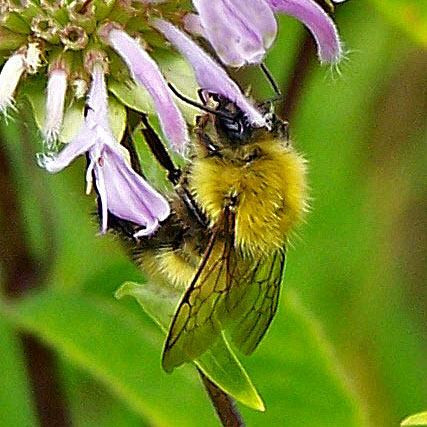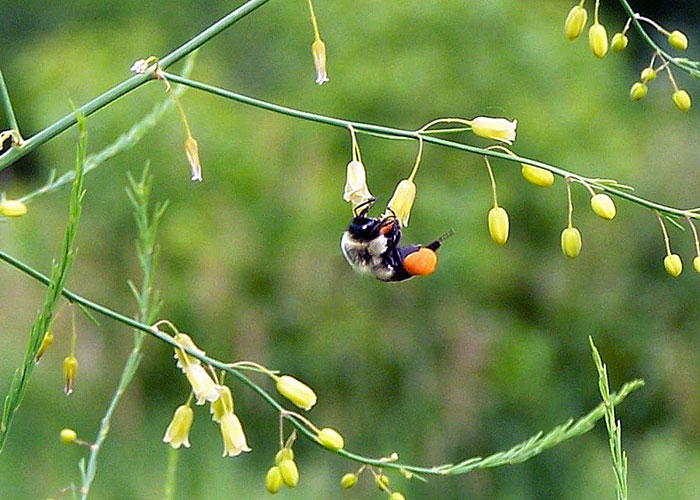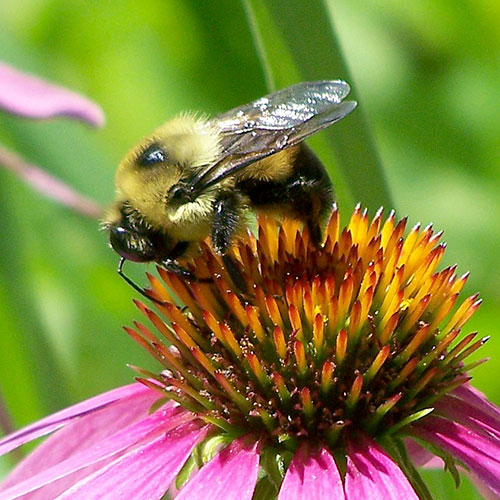Hi, BugFans,
The impressively-sized bumblebees that visit spring’s early flowers are the queens, newly emerged from their underground winter shelters. Bumblebees do not store food over the winter, a la honeybees, and only the fertilized queen survives until spring because she is better nourished than the workers (Law of Nature #1—Survival of the Fattest).
Bumblebees
Bumblebees emerge early to claim the limited available nest sites (often in deserted rodent burrows), but their bodies are extra hairy and well insulated against the chill of April. In the dandy Field Guide to Insects of North America by Eric R. Eaton Kaufman refers to them as an essentially “warm-blooded bee.” This supply-and-demand crunch also causes the queen to camouflage her nest by piling dried vegetation outside its entrance, but occasionally, an interloper queen will evict a resident queen.
After the queen locates a cavity—underground or in the walls of old buildings or even in outdoor furniture—she makes a nest of moss and grass, collects pollen, forms it into bean-sized loaves and lays eggs (400 to 1,000) on the loaves. She coats each ball with wax and sits on them for four or five days to keep them warm (maternal solicitude is uncommon in invertebrates). When the larvae hatch, they burrow into and eat the pollen and then form a tough cocoon inside the waxy coating. When the adults (sterile female workers) emerge, they care for the queen and the future broods and gather pollen and nectar for beebread. Fertile males and females are produced in late summer. Kaufman says that bumblebees “buzz pollinate” some blossoms—they set up a vibration that causes pollen to be released (Wowsers!).
Not all bees are social—in fact, most are not. Kaufman refers to bumblebees as our only native social bees (like most of our ancestors, honeybees came over on the boat). Their bodies are plump and their wings are small for their bulk, and so they are clumsy fliers. They have a fuzzy thorax and a hairy abdomen, and a yellow and black color scheme (Mother Nature’s warning colors) (The Bug Lady, incidentally, is often mistaken for Mother Nature). Their antennae are short, and their mouths are shaped for biting as well as sucking. Bumblebees have very long tongues and so are the main pollinators for some red clovers. Yes, they do sting, and their hidden nests put pedestrians, outdoor laborers and livestock at a distinct disadvantage.
The Bug Lady, who enjoys etymology as well as entomology, is pleased to report that “bumble” is derived from a Middle English word (bumblen or bomblen) meaning to boom.
The BugLady


